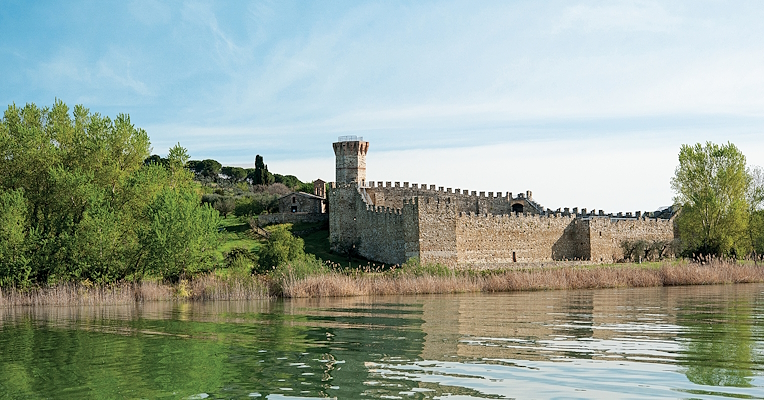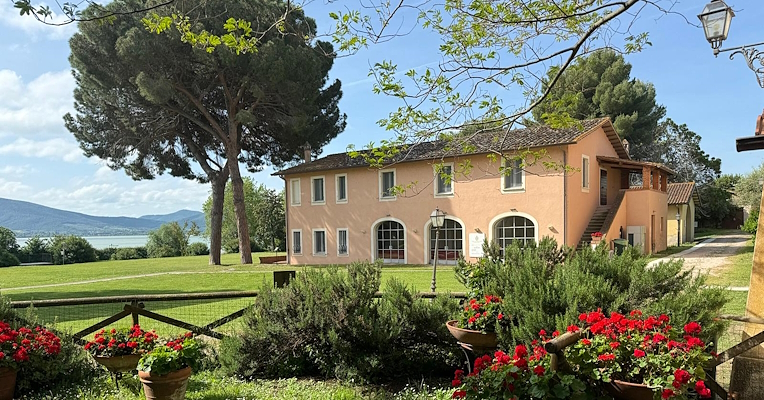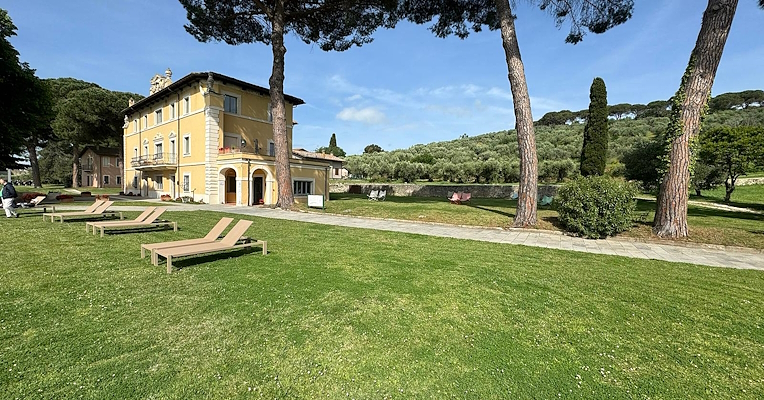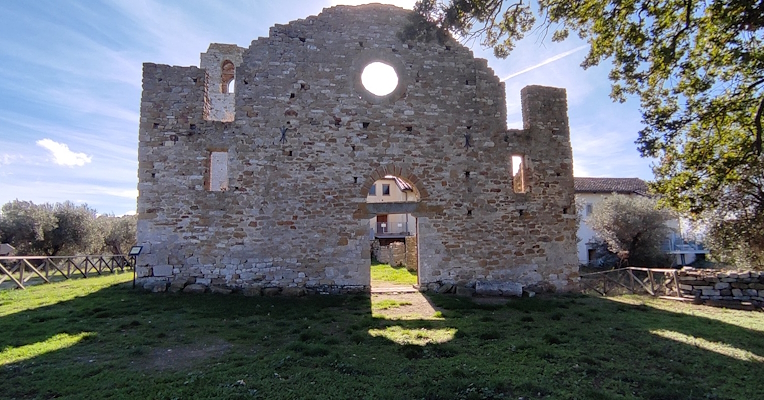Isola Polvese and its fortress
Set in Lake Trasimeno, Isola Polvese is the largest of its three islands. It holds an authentic treasure of historical monuments and natural landscapes.
To reach it, visitors can board one of the regular ferries that leave from Castiglione del Lago and San Feliciano.
Once on the island, it is possible to explore it on foot along dirt roads that pass through olive groves and holm oak groves, skirting lake reeds, where coots and herons can be seen. We recommend devoting at least half a day to visiting its fortress, the Porcinai Pool, the monastery of S. Secondo and the church of S. Giuliano, and then enjoying a gastronomic break, with a marvellous view of the lake, with a picnic in one of the specially equipped areas near the beach or at one of the restaurants.
The island represents an example of environmental management according to sustainability criteria and since 1995 has been a didactic-scientific park within the Trasimeno Regional Park. For culture lovers, it is known for the science festival “L’isola di Einstein” (Einstein’s Island).
Those who decide to leave the island at sunset on one of the evening ferries can enjoy an exciting sunset, now famous among tourists, amidst the red of the sky and lake and birds soaring overhead.





























.jpg/d0d100cb-b3f9-c5b6-6aab-ad2d73b28bf2?width=780)






